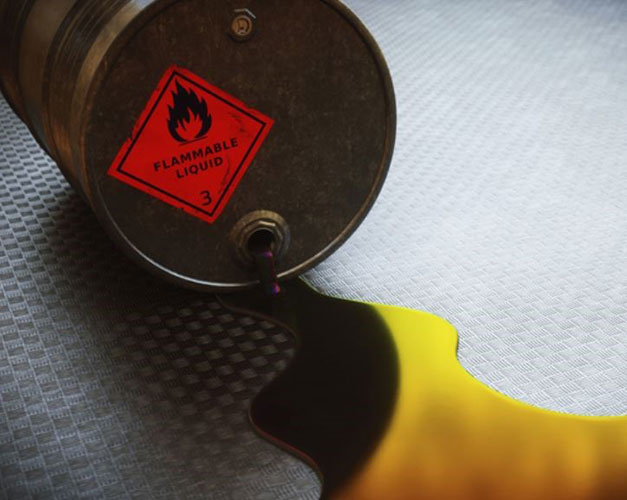
We encounter chemicals on a regular basis, whether at work, at home or in recreational activities. You may directly handle chemicals, such as cleaning products, you may have indirect exposure to chemicals, such as pesticides, or you may have what we call “potential exposures” to chemicals on a routine basis, which means that under normal conditions there are chemicals nearby which are isolated, but in the event of an accidental release you could be exposed, such as when you fuel a vehicle.
General Safety Tips for Chemicals
- Never combine any products that contain ammonia and chlorine bleach. When these common household substances are combined, they form a gas that is highly toxic and can result in serious breathing difficulties or death.
- Always take the time to read the warning label on any chemical product you use. The container label and the Safety Data Sheet (SDS) provide safe guidelines for using that specific product.
- Read container labels, safety data sheets and safe work instructions before you handle a chemical.
Using Chemicals Safely
- Make sure the area where you are working with the chemical or cleaning product is well ventilated.
- If you experience any dizziness, lightheadedness, nausea or a headache, move to fresh air immediately.
- Wear the recommended Personal Protective Equipment (PPE). Refer to the SDS for recommended PPE which may include safety gloves, safety glasses or goggles, a mask, respirator and safety shoes.
- Inspect all PPE before use. Look for defects in the equipment and replace if necessary.
- If the chemical gets on your skin wash the area immediately using warm soapy water.
- Know the location of safety showers and eyewash stations and how to use them.
- Wash your hands after handling chemicals, especially before eating.
Hazard Communication
- Identify the chemicals that you use or could be exposed to on the Job Safety Analysis (JSA). Potential exposures include the chemicals that could be released from storage or a closed process in the event of an accident or emergency.
- OSHA Regulations require ALL AU employees be trained on and provided access to the Safety Data Sheets for all chemicals to which they could be exposed. Reference Tab 11: Hazard Communication for complete details.









